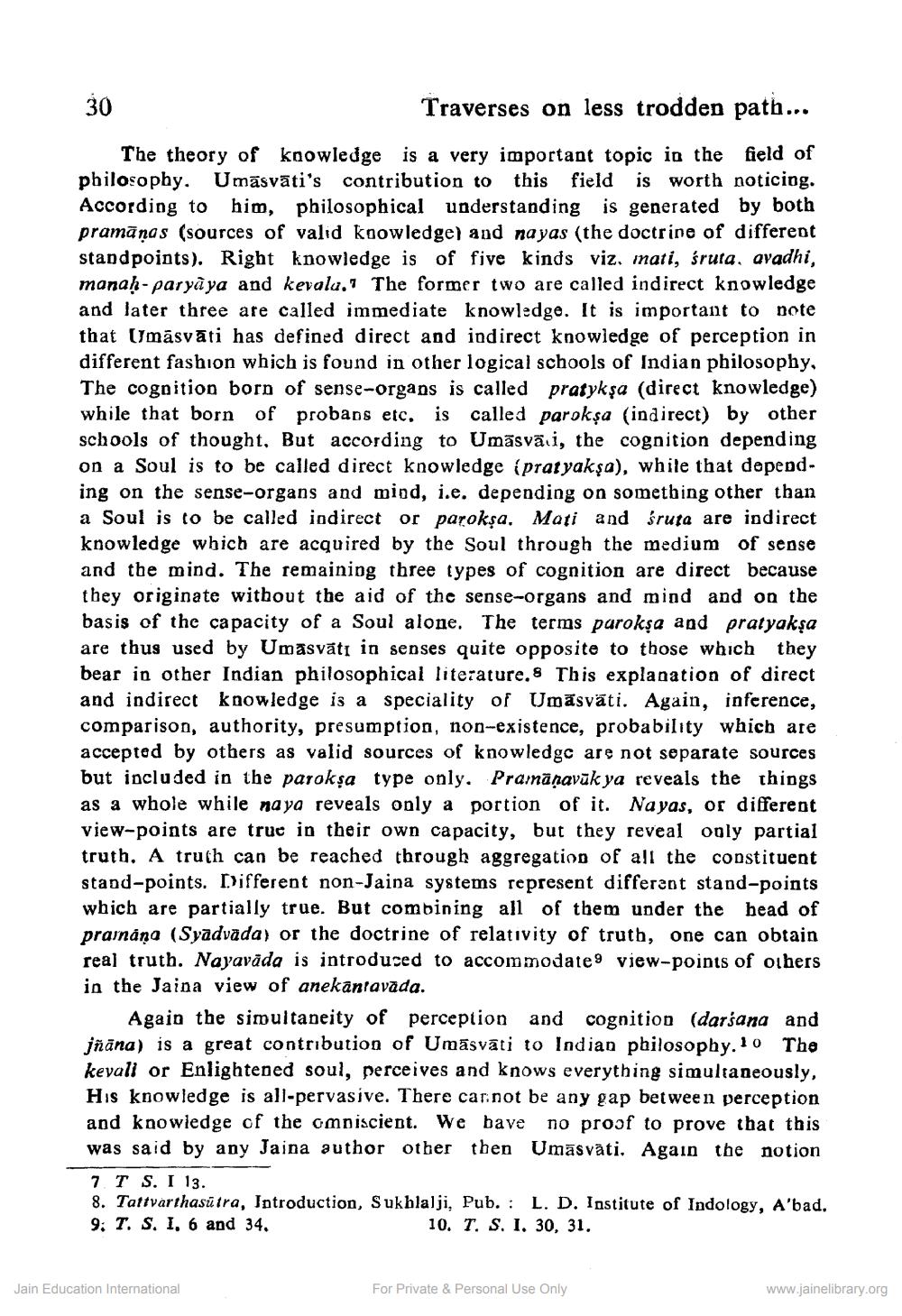________________
Traverses on less trodden path...
The theory of knowledge is a very important topic in the field of pbilosophy. Umāsvāti's contribution to this field is worth noticing. According to him, philosophical understanding is generated by both pramānas (sources of valid koowledge) and nayas (the doctrine of different standpoints). Right knowledge is of five kinds viz. inati, śruta, avadhi, manah-paryaya and kevala.? The former two are called indirect knowledge and later three are called immediate knowledge. It is important to note that (māsvāti has defined direct and indirect knowledge of perception in different fashion which is found in other logical schools of Indian philosophy, The cognition born of sense-organs is called pratykşa (direct knowledge) while that born of probans etc. is called paroksa (indirect) by other schools of thought, But according to Umāsvāii, the cognition depending on a Soul is to be called direct knowledge (prat yakşa), while that depeod - ing on the sense-organs and mind, i.e. depending on something other than a Soul is to be called indirect or parokşa, Mari and śruta are indirect knowledge which are acquired by the Soul through the medium of sense and the mind. The remaining three types of cognition are direct because they originate without the aid of the sense-organs and mind and on the basis of the capacity of a Soul alone. The terms paroksa and pratyakşa are thus used by Umāsvātı in senses quite opposite to those which they bear in other Indian philosophical literature. This explanation of direct and indirect koowledge is a speciality of Umāsvāti. Again, inference, comparison, authority, presumption, non-existence, probability which are accepted by others as valid sources of knowledge are not separate sources but included in the paroksa type only. Pramanavük ya reveals the things as a whole while na ya reveals only a portion of it. Nayas, or different view-points are true in their own capacity, but they reveal only partial truth. A truth can be reached through aggregation of all the constituent stand-points. Different non-Jaina systems represent different stand-points which are partially true. But combining all of them under the head of pramnana (Syadvada) or the doctrine of relativity of truth, one can obtain real truth. Nayavāda is introduced to accommodate 9 view-points of others in the Jaina view of anekantavada.
Again the simultaneity of perception and cognition (darśana and jñāna) is a great contribution of Umāsvāti to Indian philosophy.10 The keyali or Enlightened soul, perceives and knows everything simultaneously, His knowledge is all-pervasive. There carnot be any gap between perception and knowledge of the omniscient. We bave no proof to prove that this was said by any Jaina author other then Umāsvāti. Again the notion 7. TS. I 13. 8. Tattvarthasütra, Introduction, Sukblalji, Pub.: L. D. Institute of Indology, Abad. 9: T. S. I, 6 and 34.
10. T. S. I. 30, 31.
Jain Education International
For Private & Personal Use Only
www.jainelibrary.org




